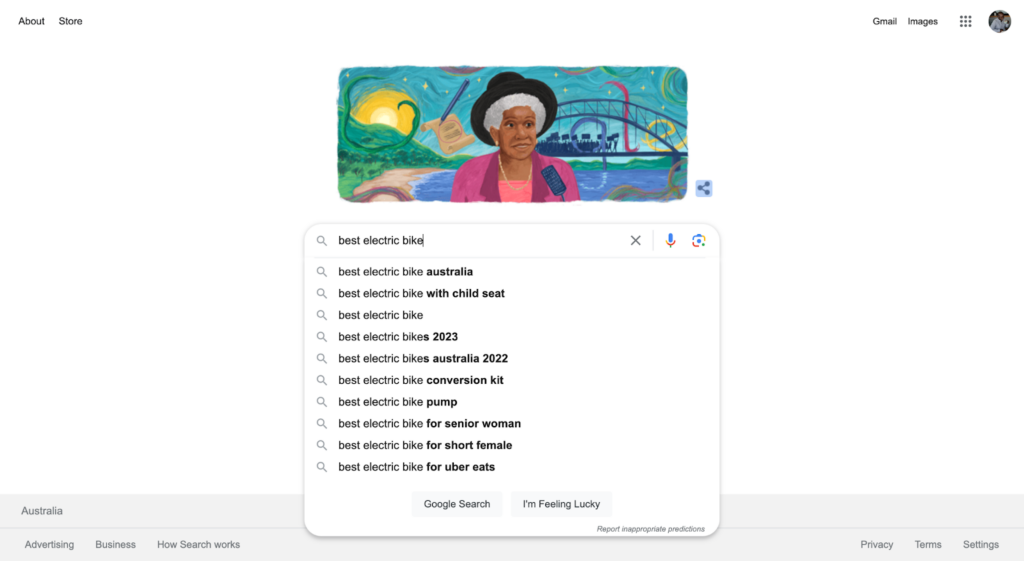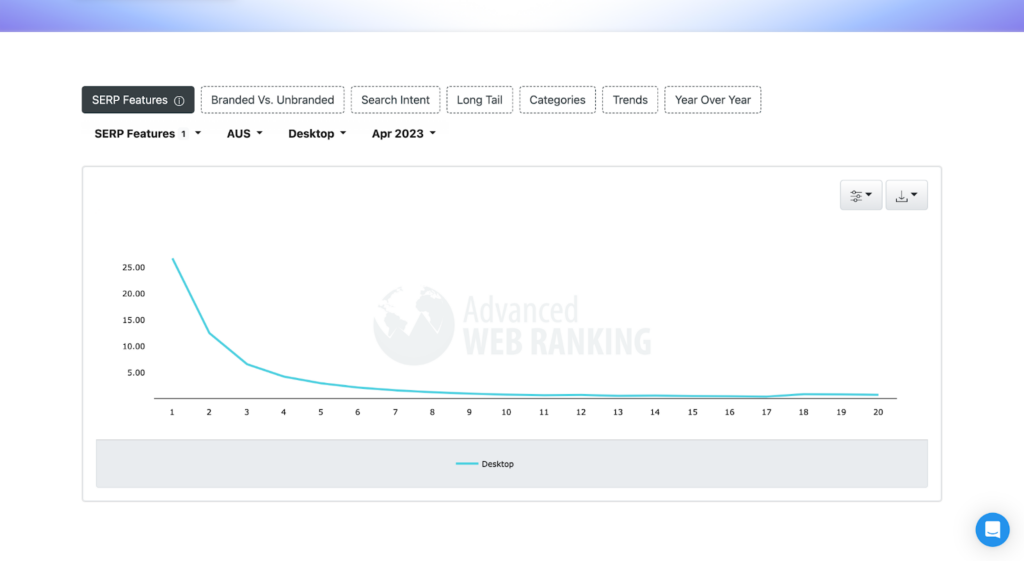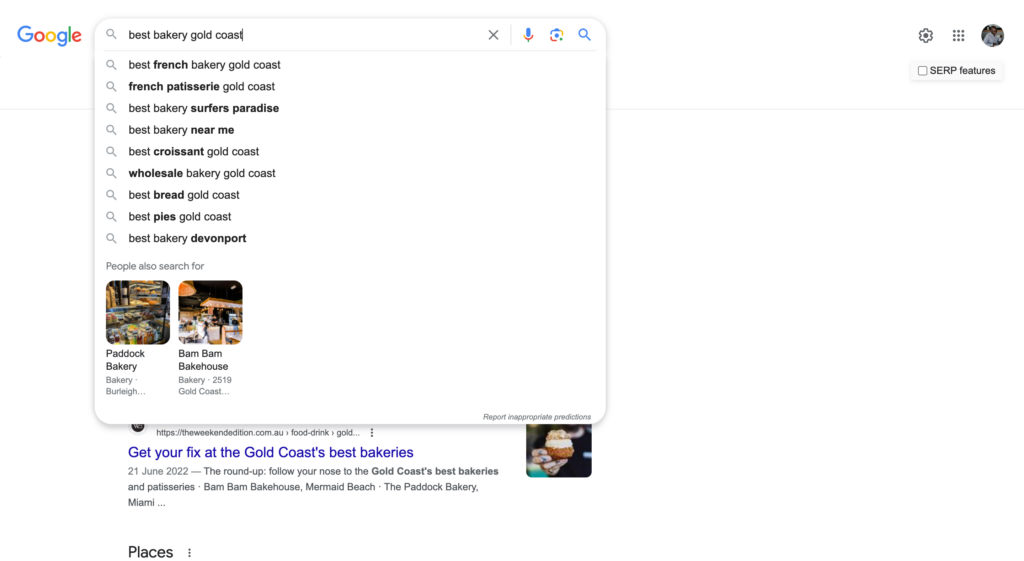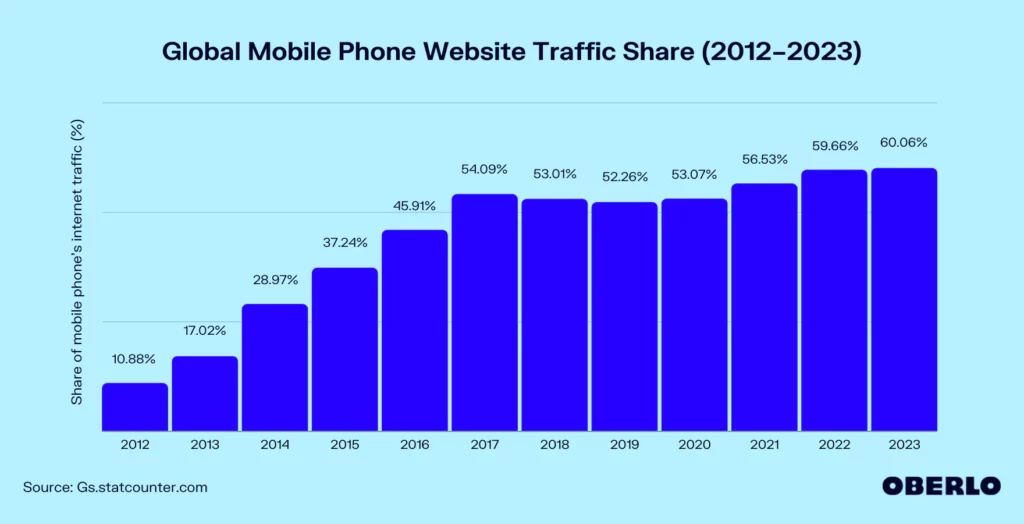What is SEO and How Does it Work? A Beginner’s Guide
SEO stands for Search Engine Optimisation, which refers to improving your website’s visibility to search engines like Google, Bing, or Yahoo.
Search engines are online platforms that allow you to search for information on the internet. People use search engines for research, problem-solving, product discovery, news updates, entertainment, or proving their spouse wrong in an argument.
According to Statista’s data from March 2023, Google held the majority of the global desktop search market with a share of approximately 85.53 per cent. Bing accounted for 8.23 per cent, making it the second-largest search engine. Yahoo’s market share stood at 2.44 per cent, placing it third.

Market share data may vary over time as search engine preferences change. This is especially prominent with platforms like Bing and Google integrating generative AI into their search engines.
With Google being so far ahead of the competition (for now), the rest of this guide will be focused on Google Search. So to be effective at SEO and get more traffic to your website, you need to think like Google.
In their own words;
Google’s mission is to organise the world’s information and make it universally accessible and helpful.
Keep this in mind as you read this article.
Why SEO is So Effective For Business (Including Real-Life Examples)
All businesses want more traffic to attract customers seeking your information, products and services. Web traffic generally comes from five sources:
- Search Engines: Users enter keywords or phrases into search engines like Google to find information, products, or services. Appearing in high search engine results through effective SEO strategies helps drive organic traffic to your website.
- Direct Traffic: Visitors who directly type your website URL into their browser or have your website bookmarked. These folks already know your brand and actively seek your website, making direct traffic a valuable source for maintaining customer loyalty and engagement. Traffic from email marketing also falls into this category.
- Social Media: Social media platforms, such as TikTok, Facebook, Instagram, YouTube, Twitter, or LinkedIn, provide opportunities to engage with a vast audience. Sharing content, promoting products or services, and interacting with followers can drive traffic to your website.
- Links: Links play a crucial role in driving traffic. Specifically, inbound links are when other websites link to your site, indicating credibility and driving referral traffic.
- Advertising: Paid traffic involves using online advertising platforms, such as Google Ads, social media ads, or display networks, to send traffic to offerings on your website.
Unlike social media, where traffic experiences drastic fluctuations and drops due to algorithm changes or shifts in user behaviour, and paid advertising, where you rely on ongoing spending to maintain traffic levels, SEO offers a more sustainable and predictable traffic source.
Sure, there are also algorithm shifts and changes to rankings, but it’s not as significant as other channels.
| Traffic Source | Pros | Cons |
| Search Engines | – High-quality, targeted organic traffic – Sustainable and long-term results | – Requires time and effort for effective SEO implementation – Rankings can fluctuate due to algorithm changes |
| Direct Traffic | – Targeted traffic from loyal customers – Higher likelihood of conversions | – Limited reach beyond the existing customer base – Reliant on brand awareness and customer loyalty |
| Social Media | – Broad reach and potential for virality – Opportunity for engagement and interaction | – Organic reach can be limited due to algorithm changes – Requires consistent content creation and management |
| Links | – Referral traffic from credible sources – Can enhance brand visibility and authority | – Dependence on other websites’ willingness to link to you – Building and maintaining links can be time-consuming |
| Advertising | – Immediate visibility and targeted reach – Control over targeting and ad placement | – Reliant on ongoing financial investment – Ad-blockers and ad fatigue can impact the effectiveness |
Now that you know why SEO is so valuable for getting traffic from Google Search, let’s look at some real-life case studies from the How the F*ck SEO Podcast to put the numbers into perspective.
Example #1 – London-Based Childcare Cracks £13 Million From SEO
This case study highlights the incredible growth story of a children’s daycare in London. The featured expert, Tim Hanson, transformed their website from minimal organic traffic to dominating the rankings for over 100 bottom-of-funnel keywords.
This achievement resulted in a staggering £13 million in revenue and the expansion of their locations to 17 across the city.
Key Highlights:
- Quick optimisations that accelerate growth.
- The importance of allowing writers creative freedom for higher rankings.
- Strategies for identifying and targeting “money keywords” that drive significant results.
Example #2 – Outreach Software Goes From 0 to 100k Organic Monthly Visitors in 2 Years
Respona, a software startup with less than 50 employees, reached over 100,000 monthly visitors in just two years. Through the power of topical authority and strategic SEO techniques, Respona’s content strategy became the driving force behind its impressive organic growth.
Key Highlights:
- Produced 100 posts in two years.
- Meticulous content planning targeting topics closely related to the product.
- Established expertise and credibility through in-depth content creation.
How Does SEO Work?
The more you can think like Google, the more success you’ll have with SEO. Below is a basic overview of how Google serves its users.
#1 Query and Context
When you type a query into Google, the results are influenced by various factors, including your location and browsing history. Google aims to provide the most relevant and personalised results based on these contextual factors.

#2 Crawling and Presenting Results
To present you with the best possible solutions, Google uses bots or spiders that crawl websites across the internet. These bots analyse the content, structure, and relevance of web pages, helping Google compile an index of websites to present to you in the search results.
#3 Click-Through Rate
As a user, you select a website based on the likelihood of finding the desired information or solution. The click-through rate (CTR) measures the percentage of users who click on a particular search result. Organic CTRs can vary depending on the device, seasonality and query type. Tools like the Google Organic CTR History Tool can provide historical CTR data.

#4 Engagement Signals
When you land on a website from the search results, Google assesses various engagement signals to determine if the webpage satisfies your needs. These signals include interaction with the page, time spent on the website, purchase or cart additions, bouncing back to the search results, page load speed, and other relevant factors.
#5 Feedback Loop and Rankings
Based on the engagement signals received, Google gauges your satisfaction and uses this feedback loop to rank web pages in search results. Websites that effectively meet your expectations and deliver engaging experiences are rewarded with higher rankings.
The process of processing your queries and context and providing relevant pages in the search results is managed by Google’s algorithm, a highly advanced machine learning technology.
Google’s algorithm isn’t dissimilar to social media algorithms, where engagement ultimately determines how much your content gets seen.
How To Get Started with SEO and Drive Organic Traffic to Your Website
While the world of SEO can appear complex, the concept is straightforward:
- Discover what people are searching for related to your business
- Publish helpful pages and blog posts that address what your target audience is searching
- Ensure that Google can understand your website so it can match your pages with user queries
The execution of these steps is more involved. Let’s take a look.
Create Relevant and Helpful Pages
Start by conducting comprehensive keyword research to understand how users describe topics relevant to your business.
For instance, if you have a bakery on the Gold Coast, you might discover that users often search for “best bakery Gold Coast” or “artisanal bread Gold Coast.”

By incorporating these keywords naturally into your content, meta tags, and headings, you can optimise your pages to match user search queries.
Use tools like Google Search, Google Keyword Planner, Google Search Console, or third-party SEO tools like KWFinder to identify relevant keywords with a good monthly search volume and lower competition. This research will guide your content creation and help you address your target audience’s specific needs and preferences.
Additionally, ensure your content provides value and effectively addresses the user’s search query. Focus on creating high-quality, user-focused content that answers questions, solves problems, or offers valuable insights. Refer to Google’s helpful content guidelines for best practices and tips on creating content that fulfils user intent.
Ensure Technical Soundness
Technical optimisation is vital for a strong SEO foundation. Improve your website’s loading speed to enhance user experience and reduce bounce rates.
Implement image compression, browser caching, and code minification to optimise your page speed. Tools like Google PageSpeed Insights can provide recommendations for improving your website’s performance.
Submitting your sitemap to Google Search Console helps search engines properly index your website so that your content has the chance to be discovered on Google. Regularly monitor indexing status and address any existing crawling or indexing issues.
And with over 60% of all website traffic coming from mobile devices, it’s crucial that your website is mobile-friendly.

Implement responsive design and optimise your pages for mobile devices. Use Google’s Mobile-Friendly Test Tool to create seamless navigation and a positive user experience across various screen sizes.
Add Credibility to Your Pages
Incorporate internal and external links within your content to establish credibility and authority. Suppose you’re writing a blog post about baking tips. You can internally link to related articles on your website that provide more in-depth information on specific techniques or recipes. This internal linking helps users navigate your site and signals to search engines the relevance and structure of your content.
Additionally, include external links to reputable sources that support your claims or provide additional information. For instance, if you’re discussing the health benefits of certain ingredients, linking to scientific studies or authoritative health websites adds credibility to your content.
This works the other way as well. If other websites link to your web pages, this tells Google that your page is reputable and should be considered for higher rankings, which is why the next point is critical.
Promote Your Pages
Promotion is crucial to increase the visibility and reach of your content. Leverage social media platforms like TikTok, Twitter and LinkedIn to share your blog posts, product pages, or helpful guides. Engage with your audience, respond to comments, and encourage sharing to drive traffic to your website.
Use email marketing to notify your subscribers about new content, exclusive offers, or updates. Sending newsletters with valuable information or personalised recommendations encourages your audience to revisit your website.
Additionally, take a proactive approach by contacting relevant websites, journalists, bloggers, or industry influencers. Offer unique content that showcases your expertise and provides valuable content to their audience. By collaborating with others, you can gain exposure, build relationships, and earn backlinks to your website.
By focusing on these fundamental aspects of SEO, you’ll establish a strong foundation for your website’s visibility and success in search engine rankings. Remember that SEO is an ongoing process that requires continuous optimisation, monitoring, and adaptation to stay ahead in the ever-evolving digital landscape.
Is an SEO Strategy Effective For Any Type of Business?
While SEO can be a highly effective strategy for many businesses, it’s important to recognise that its suitability varies depending on market size, niche, and offer. Yes, SEO holds immense potential for driving organic traffic and long-term results; however, it may not be the best fit for every business.
To determine if SEO is the right strategy for your specific business, you need to evaluate your target market, competition, and the overall landscape of your industry. Also, understanding your business goals, budget, and resources will help you decide about investing in SEO.
KindMark offers a free discovery call for purpose-driven businesses. This conversation lets you know if SEO aligns with your business objectives.
Following the call, the KindMark team will provide you with a comprehensive video audit highlighting opportunities, outlining strategies, and insights into the estimated impact SEO can have on your online visibility. Book a chat today to find out if SEO is a good strategy for your business.





